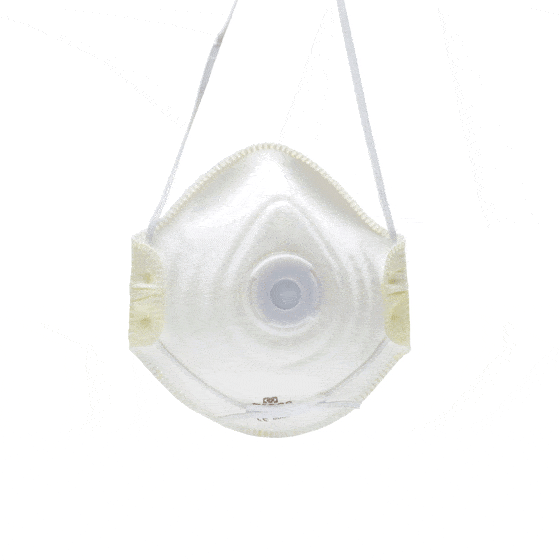
P3 preformed valve
FFP3 particle filtering mask with valve. 10 units per box
The P3C Valve is a particle filtering mask made of polypropylene, which guarantees a soft interior covering. The nasal bridge incorporates a foam cushion that provides extra adaptability and comfort to the wearer. The adjustable elastic band is latex-free and offers improved fastening. It has an exhalation valve and passes the dolomite test. Marking is FFP3.
FFP3 particle filtering mask with valve. 10 units per box
The P3C with Valve particle filtering mask is a mask that offers excellent comfort thanks to the following characteristics:
- Inner polypropylene layer, making the mask soft to touch.
- Exterior made of polyester, which is soft to the touch like cotton.
- Adjustment method facilitates rapid placement of the device.
- Includes a latex-free double-elastic adjustment system.
- The nose bridge has foam-cushioned lining for greater comfort to the wearer.
- Exhalation valve for added comfort in hot environments, avoiding heat and humidity build-up within the mask.
- Passes the dolomite test, which ensures better clogging resistance during use.
- The mask is latex and metal free.
- Not reusable, one-time use for one workday is recommended.
- The level of use is 3. Protects against high concentrations of dust and particles that can affect the respiratory tracts. Limit value: > 0.1 mg/m3 (50 x TLV)
- FFP2 Marking
The P3C with Valve offers respiratory protection against medium- to high-toxicity solid and liquid particles. Must not be used for filtering out gas or vapour. Do not use in atmospheres with less than 17% oxygen content volume either, nor in explosive atmospheres. It can be used in sectors such as construction, jobs that involve metal, biological allergens such as fungi or viruses, mining, ceramics, smelting, lumber industries, agriculture.
| Standard | Description | More information on the regulations |
|---|
| Documentation | |
|---|---|
| P3CVAL_Cert_EN.pdf | |
| P3CVAL_FIC_EN.pdf | |
| P3CVAL_UE CD_EN.pdf | |